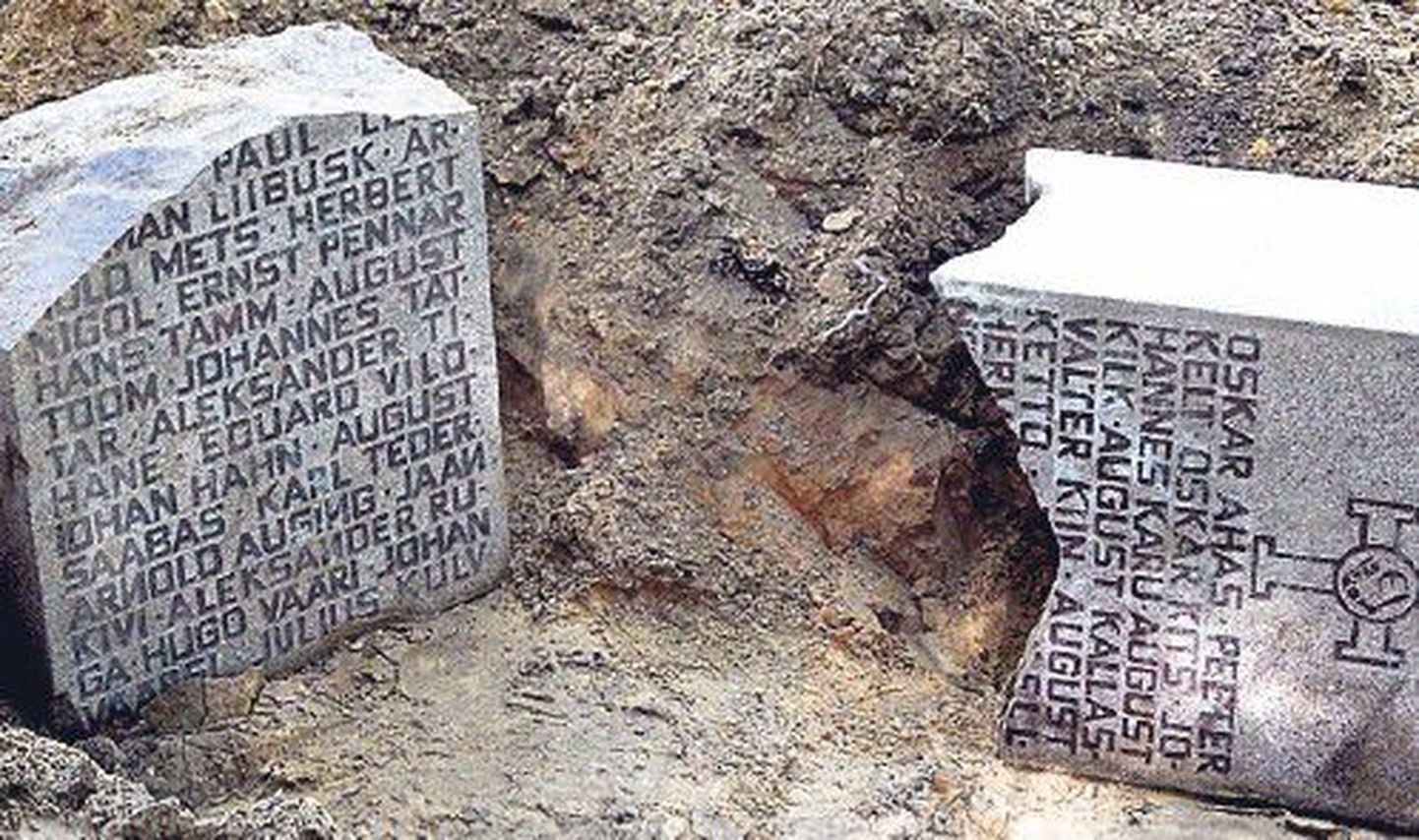
At the foot of «Rannu ema» [Mother of Rannu], a memorial column has been discovered with 27 names of locals.

At the foot of «Rannu ema» [Mother of Rannu], a memorial column has been discovered with 27 names of locals.
During sidewalk renovations at Rannu Commune cemetery, Tartu County, the granite component of a monument to Estonian War of Independence has been unearthed. The attached bronze helmet, rifle and relief of a soldier effigy still remain undiscovered.
The granite part of the monument is split in two but well preserved otherwise. The names of 27 Rannu people, perished in the War of Independence, can be read easily.
On Friday morning, metal detectors were beeping all around the mother-statue – as Defence League members were searching the surroundings in hopes of finding the missing details made of bronze.
Rannu Commune elder Maano Koemets, surveying the works, said the pieces of the monument were discovered accidentally during pavement works, in one spade’s depth. That triggered the hope that the other parts might be nearby – perhaps.
«Better late than never. Having no prior information, we had no reason to search this ground to find the monument,» said Mr Koemets.
With the most diligent of efforts, the surroundings of the mother-statue were searched and combed. Any hope-inspiring beep – signifying the presence of metal – ended up with a disappointing nail or coin.
Historic opening ceremony
This is what Postimees wrote, in July 1930: «Monument erected in Rannu. On the 27th this month, a solemn blessing and dedication of corner stone to the heroes of War of Independence will be held in Rannu Cemetery, promising to be a grand day for the local community. The monument will be made of native granite, according to design by the sculptor V. (Voldemar – MT) Melnik. The front of the monument will be decorated by an effigy of a fallen soldier, and a helmet and rifle at the top.»
The monument was solemnly opened on August 27th 1931. As the monument committee was dissolved, a year later the column was trusted into the hands of Rannu Rural Ladies Society «Laine» which took care of it regularly. The square was equipped with pavements, benches were installed, grass and flowers planted.
Aare Uind, a native of Rannu and former Defence Forces officer, said the monument cost 1,450 Estonian kroons as it was erected.
The monument was probably broken in May 1949. 27 years later, the sculpture «Rannu ema» by Ole Ehelaid was set in its place. The stature which came into being at the initiative of Kalev Raave, head of the then Võrtsjärve Collective Farm, serves as a memorial to all who fell in the war.
In 1989, Rannu Heritage Conservation Club was called into being with a chief aim to restore the War of Independence monument. A collection was organised, but due to internal tensions the work was delayed and the money quickly cheapened. Thus, they ended up opening a plaque in Rannu Church, in 1991, with 31 names of people lost in the war.
Two statues side by side
According to Maano Koemets, it is planned in near future to remove the upper layer of earth around «Rannu ema», to search the area again. As their metal detector works to the depth of almost half a meter, there is hope the bronze parts will be found as well.
Mr Koemets thinks the pieces of the column found should be merged again. If the bronze details will not be found, these can be restored on basis of photos.
In January, on the 95th anniversary of the Battle of Rannu, Aare Uind proposed to restore the monument by the grand jubilee due in five years. According to Mr Koemets, since then the issue has been under discussion and the current find will surely provide a boost.
He added that it is planned to place «Rannu ema» and the newly found column side by side – thus they both will keep their original sites.